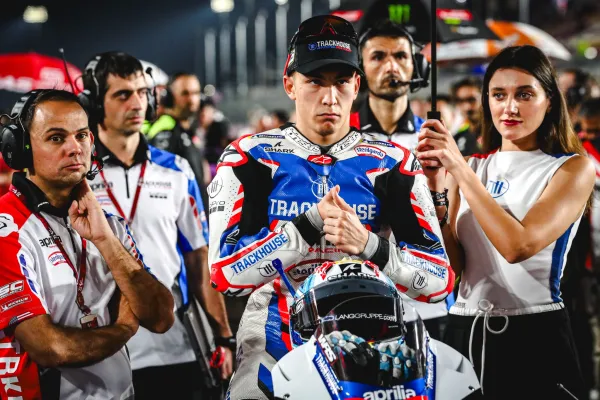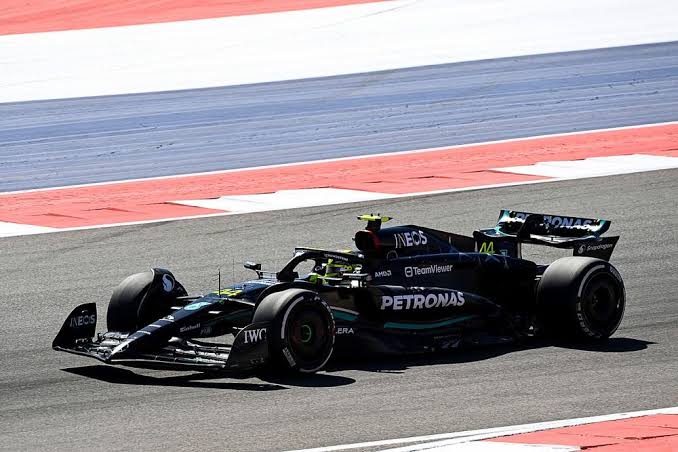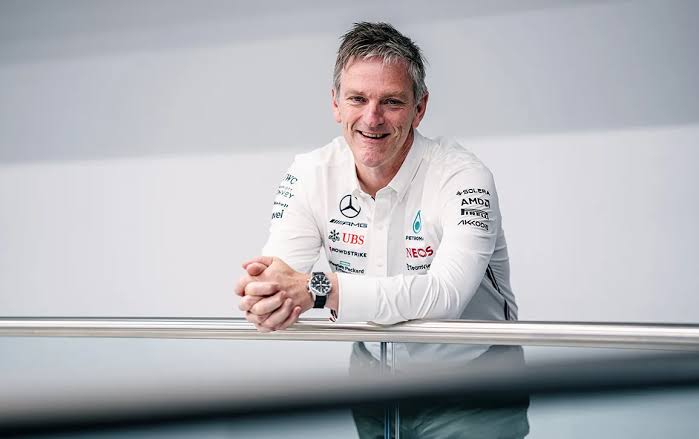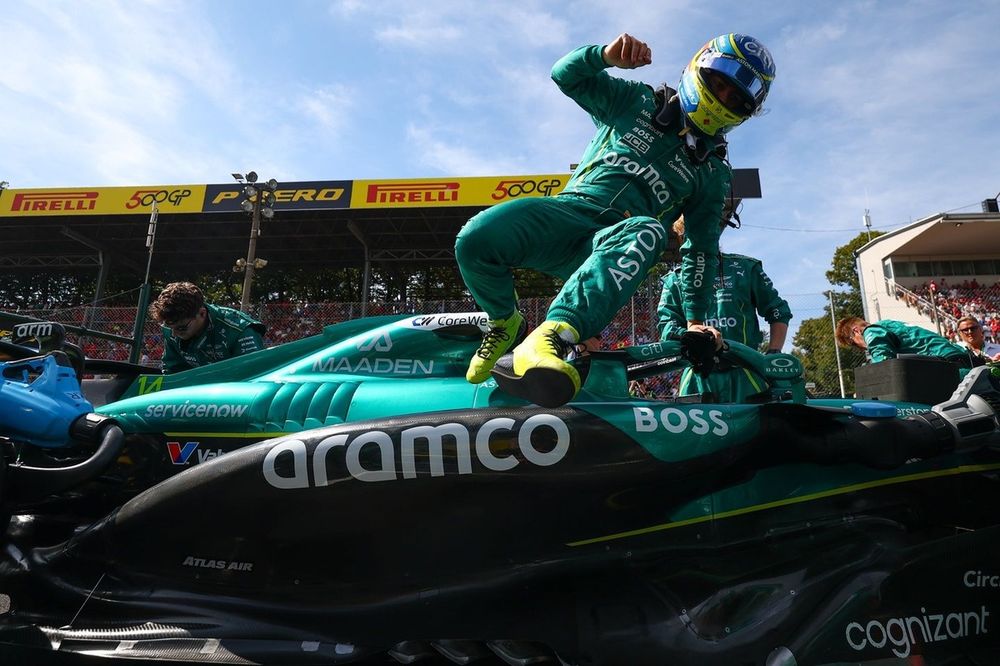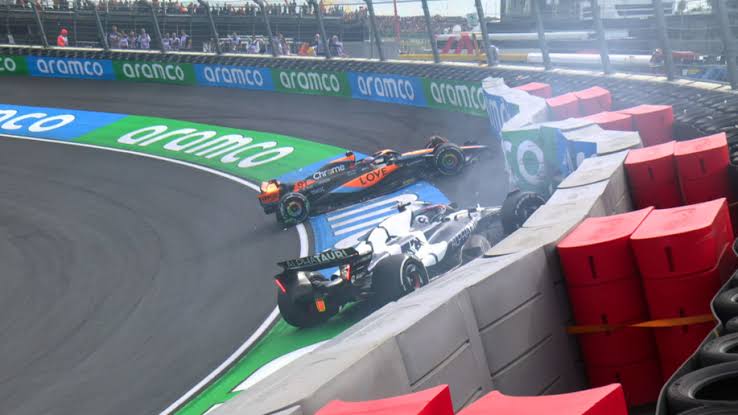MotoGP 25: Milestone’s Game Revolution And Championship Predictions
The 2025 MotoGP season is already delivering high-octane drama on real-world circuits, while Milestone prepares to launch its most ambitious virtual recreation of the championship to date. With Jorge Martin making his comeback from injury, Alex Marquez surprisingly leading the standings, and Marc Marquez hunting for championship glory, this year promises exceptional racing both on track and in the digital realm. Set for release on April 30, MotoGP 25 brings revolutionary changes to the franchise while accurately reflecting the current season’s dynamics and rivalries.
Technical Advancements: A New Era For The MotoGP Game
MotoGP 25 represents a significant technological leap for Milestone’s long-running motorcycle racing series. At the core of this evolution is the implementation of Unreal Engine 5, a decisive upgrade that enables more detailed visuals, improved lighting effects, and enhanced physics simulations. This cutting-edge engine allows the game to render motorcycles, tracks, and riders with unprecedented fidelity, creating a more immersive and authentic racing experience.
Sound design has received particular attention in this year’s iteration, with Milestone conducting special on-track recording sessions to capture the authentic audio profiles of actual MotoGP machines. These recordings deliver a more accurate representation of engine notes, exhaust sounds, and environmental audio, enhancing the sensory experience and further blurring the line between virtual and real racing. The attention to sonic detail extends to trackside ambience and mechanical nuances that motorcycle enthusiasts will immediately recognize.
The comprehensive content package includes the full 2025 MotoGP season with all teams, riders, and tracks from the MotoGP, Moto2, and Moto3 categories. This roster allows players to step into the boots of current championship contenders like Marc Marquez, Pecco Bagnaia, and the returning Jorge Martin, as well as promising rookies such as Fermin Aldeguer and Ai Ogura. The track selection has been expanded with the addition of Hungary’s new Balaton Park circuit and the return of the legendary Brno circuit in the Czech Republic.
The game’s visual presentation benefits significantly from the Unreal Engine 5 implementation, with improved lighting models, more detailed textures, and enhanced environmental effects creating a more convincing simulation of real-world racing conditions. Weather effects appear more realistic, with dynamic changes affecting both visual presentation and riding physics. The character models for riders have been refined with improved animations that more accurately reflect the subtle body positioning adjustments that differentiate riding styles among the sport’s elite competitors.
Gameplay Innovations: Catering To Every Type Of Rider
Perhaps the most significant innovation in MotoGP 25 is the introduction of dual physics models: the Arcade Experience and the Pro Experience. This bifurcated approach addresses a longstanding challenge in racing game design – balancing accessibility for newcomers with depth for simulation enthusiasts. Both physics models are available across all game modes and motorcycle classes, allowing players to tailor the experience to their preferences regardless of which aspect of the game they’re exploring.
The Arcade Experience offers a more forgiving and intuitive handling model designed for casual players or those new to motorcycle racing games. This mode simplifies physics calculations while maintaining the fundamental characteristics that differentiate the various manufacturers and motorcycle classes. Players can focus on racing lines and overtaking maneuvers rather than the minutiae of motorcycle dynamics, making the game more immediately enjoyable without extensive practice.
In contrast, the Pro Experience caters to simulation enthusiasts with a sophisticated physics model that accounts for variables like tire temperature, fuel load, aerodynamic effects, and suspension dynamics. This mode requires a more technical approach to riding, with players needing to carefully manage throttle and brake inputs while adapting to changing track conditions. The Pro Experience rewards practice and skill development, offering a challenging but ultimately more rewarding gameplay experience for dedicated players.
The Training Sessions feature represents another major addition, allowing players to practice and improve their skills outside of competitive racing. Set in purpose-built environments, these sessions focus on three disciplines practiced by real MotoGP riders: Motard, Flat Track, and Minibikes. Each discipline emphasizes different aspects of motorcycle control and racing technique, helping players develop transferable skills that improve their performance in traditional MotoGP races.
The Bike Development System gives players unprecedented control over the evolution of their motorcycle throughout a career season. This system simulates the real-world research and development process of a MotoGP team, with players working alongside virtual engineers to identify areas for improvement and direct development resources. By prioritizing different aspects of performance—engine power, handling, braking, electronics, or aerodynamics—players can create a customized development path that suits their riding style and addresses the specific challenges of upcoming circuits.
These technical innovations are complemented by an enhanced career mode that incorporates more sophisticated team dynamics and championship progression. Players can start their career in any of the three classes—MotoGP, Moto2, or Moto3—and work their way up through the ranks, negotiating contracts, managing relationships with team members, and building a reputation in the paddock. The career experience now includes more varied objectives and challenges that reflect the multifaceted nature of professional motorcycle racing, extending beyond pure race results to encompass media obligations, sponsor requirements, and technical development.
The 2025 MotoGP Season: Current Status And Dramatic Storylines
As MotoGP 25 prepares to launch, the real-world championship that it simulates is already three rounds into what promises to be an extraordinary season. The Qatar Grand Prix, scheduled as Round 4, marks a pivotal moment in the championship with the anticipated return of defending world champion Jorge Martin following a series of injuries that delayed his debut with the Aprilia factory team.
The early championship leader is Alex Marquez, whose remarkable consistency has been the story of the opening rounds. Despite not yet claiming a race victory, the Gresini rider has accumulated six second-place finishes, establishing himself as the points leader heading into Qatar. This consistent performance has allowed Alex to build a championship advantage while his more illustrious rivals have experienced mixed fortunes.
Marc Marquez, the eight-time world champion, entered the 2025 season as the favorite to reclaim the title after years of injury struggles and adaptation to new machinery. While he has shown flashes of his legendary speed and aggression, Marquez acknowledges that the Qatar circuit historically favors his brother Alex and Francesco Bagnaia. The sibling rivalry between the Marquez brothers adds a fascinating personal dimension to the championship battle.
Francesco “Pecco” Bagnaia, the 2022 and 2023 champion, has had a measured start to the 2025 season, claiming his first victory at the most recent round. The Italian rider remains confident in his ability to build momentum as the season progresses, particularly at circuits where he has historically excelled. Bagnaia’s championship experience and calculated approach to points accumulation make him a formidable contender despite not leading the standings at this early stage.
Jorge Martin’s return in Qatar after missing the opening rounds due to injury represents one of the season’s most compelling storylines. The defending world champion faces the dual challenge of adapting to Aprilia machinery after years on Ducati and regaining his physical condition following multiple injury setbacks. Martin’s perspective is modest yet determined, noting that “just finishing this weekend would be a big victory” as he embarks on his eagerly anticipated Aprilia debut.
The rookie class of 2025 has already made an impression, with particular attention focused on Fermin Aldeguer. The young Spanish rider brings impressive credentials from the junior categories and has adapted quickly to the demands of the premier class. His fellow rookie Ai Ogura has also shown promise with the Trackhouse MotoGP team, drawing praise from team principals Justin Marks and Davide Brivio for his technical feedback and adaptability.
Championship Predictions: Experts And Fans Weigh In
As the 2025 season unfolds, various experts and fan polls have offered perspectives on how the championship might develop. According to a survey conducted by Paddock GP, Marc Marquez emerges as the clear favorite, with 72% of respondents predicting he will claim the championship. This confidence reflects both Marquez’s historical dominance in the premier class and his impressive adaptation to new machinery following his move to Ducati.
The same survey identified Marquez as the likely successor to Jorge Martin as the “King of the Sprint,” with approximately 59% of votes favoring the eight-time world champion. Pecco Bagnaia (25%) and Jorge Martin (11%) also received significant support in this category, reflecting their established prowess in the shorter Saturday races that were introduced to the championship format in 20231.
The Race’s expert panel offered more nuanced predictions for the final championship standings. Their collective forecast included Franco Morbidelli in tenth position, an improvement from his difficult 2024 campaign that was compromised by a pre-season head injury. The experts noted that a full pre-season testing program and the supportive environment of Valentino Rossi’s VR46 team could help Morbidelli rediscover some of the form that made him a title contender in 2020.
Brad Binder was predicted to finish ninth in the championship despite placing fifth in 2024. This relatively conservative forecast reflected concerns about KTM’s development trajectory and Binder’s pre-season testing performance. The South African rider’s aggressive style and determination make him a potential podium contender at certain circuits, but consistency across the entire calendar remains the key to championship success.
The rookie battle receives significant attention in championship predictions, with Fermin Aldeguer emerging as the clear favorite. Nearly 63% of respondents in the Paddock GP survey identified Aldeguer as the likely standout among the 2025 rookies, ahead of Ai Ogura (34%) and Somkiat Chantra (3%). This confidence stems from Aldeguer’s impressive performances in the intermediate class and strong early showings in the premier class.
Beyond individual rider performances, several structural factors will influence the 2025 season. The continuing evolution of the MotoGP calendar, with the addition of Hungary’s Balaton Park circuit and the return of Brno in the Czech Republic, presents riders and teams with both opportunities and challenges. Weather conditions at notoriously unpredictable venues can dramatically alter the competitive order, and the mid-season development race between manufacturers often shifts the performance balance, potentially transforming early-season strugglers into late-season contenders.
How MotoGP 25 Captures The Essence Of The Real Sport
Milestone’s MotoGP 25 aims to translate these real-world dynamics into a compelling interactive experience, balancing authenticity with accessibility. The game’s development team works closely with riders, teams, and Dorna (MotoGP’s commercial rights holder) to ensure accurate representation of the sport’s technical and competitive elements. This collaboration extends beyond visual recreation to encompass the nuanced handling characteristics of different motorcycles, the distinctive features of each circuit, and the strategic elements that define modern MotoGP racing.
The renewed focus on sound design exemplifies this commitment to authenticity. By conducting dedicated recording sessions with actual MotoGP machines, Milestone captures the distinctive acoustic signatures of different manufacturers’ engines—from the aggressive howl of the Ducati V4 to the smoother delivery of the inline-four Japanese machines. These sonic details contribute significantly to the immersive quality of the simulation, allowing players to identify different motorcycles by sound alone, just as trackside spectators can at real events.
The implementation of Unreal Engine 5 enables more sophisticated physics calculations that account for the complex interactions between motorcycle, rider, and track surface. The dual physics options—Arcade and Pro—represent different approaches to translating these interactions into gameplay, with the Pro Experience offering a more demanding but ultimately more rewarding approximation of real MotoGP riding.
The Training Sessions feature demonstrates Milestone’s understanding of how real MotoGP riders develop and maintain their skills. The inclusion of Motard, Flat Track, and Minibike disciplines reflects actual training methodologies used by premier class competitors, who regularly practice these alternative riding styles to develop specific aspects of their technique. By integrating these training methods into the game, MotoGP 25 offers both an entertaining diversion from traditional circuit racing and a meaningful skill development pathway that mimics real-world practice.
The Bike Development System similarly draws inspiration from the actual research and development processes of MotoGP teams. Throughout a real season, teams continuously evolve their motorcycles based on rider feedback, data analysis, and engineering innovations. MotoGP 25 simulates this process by allowing players to direct development resources toward specific performance areas, creating a personalized development pathway that reflects their priorities and riding style.
The authenticity extends to the game’s recreation of the 2025 season’s competitive dynamics. MotoGP 25 features the current championship standings and rivalries, with Alex Marquez leading the points race and Jorge Martin making his comeback at Qatar. Players can step into these ongoing storylines, potentially rewriting history by altering the outcome of future races or creating alternative championship scenarios.
The Future Of MotoGP: Virtual And Real Convergence
As both the real-world championship and its virtual counterpart continue to evolve, they increasingly reference and influence each other. Professional riders use sophisticated simulators as training tools, familiarizing themselves with new circuits or experimenting with setup changes in a risk-free environment. Several current MotoGP competitors actively participate in virtual racing, including eSports competitions organized by Dorna that run parallel to the real-world championship.
This convergence creates a feedback loop between the virtual and real versions of the sport. Developments in actual MotoGP technology and competitive strategies inform the design of the video game, while the accessibility and experimental nature of the virtual environment allows for innovation and learning that can transfer back to real-world competition. The increasing sophistication of physics modeling and the growing acceptance of simulation as a legitimate training tool accelerate this cross-pollination.
MotoGP 25’s dual physics approach acknowledges the different ways players engage with motorcycle racing games. The Arcade Experience serves as an accessible entry point for new or casual fans, potentially sparking deeper interest in both the virtual simulation and the real-world championship. The Pro Experience caters to dedicated enthusiasts seeking a more technical challenge, including actual motorcycle racers using the game as a supplementary training tool.
The 2025 season marks a particular convergence point between the real and virtual worlds of MotoGP, with significant changes in both realms. The real championship features Jorge Martin’s switch to Aprilia, Marc Marquez’s continued adaptation to Ducati machinery, and the introduction of the Balaton Park circuit. Meanwhile, the virtual championship implements Unreal Engine 5, dual physics models, and expanded training options.
Television broadcasts of MotoGP races increasingly incorporate elements familiar from video game presentations, including real-time data overlays and alternative camera perspectives. Conversely, MotoGP 25 adopts visual language and presentation styles from television broadcasts, creating a consistent aesthetic experience across different media. This visual and conceptual convergence reinforces the connection between the two expressions of the sport.
Conclusion: An Exciting Season Ahead In Both Realms
As the 2025 MotoGP season unfolds on real circuits around the world and in the virtual environment of Milestone’s latest game, both versions of the championship demonstrate the continuing evolution and appeal of motorcycle racing. The real-world championship features compelling storylines: Jorge Martin’s comeback from injury and adaptation to Aprilia machinery, Alex Marquez’s unexpected championship lead, and Marc Marquez’s quest to reclaim his position at the top of the sport.
Milestone’s MotoGP 25 translates these real-world dynamics into an interactive experience that balances authenticity with accessibility. The implementation of Unreal Engine 5, enhanced sound design, dual physics models, and expanded training options represents the most ambitious attempt yet to capture the essence of MotoGP in a video game. The April 30 release date positions the game to coincide with the heart of the real championship season, allowing players to race alongside their favorite riders.
Marc Marquez emerges as the favorite in fan polls, with nearly three-quarters of respondents expecting him to claim the championship. The rookie battle centers on Fermin Aldeguer, widely expected to outperform his fellow newcomers Ai Ogura and Somkiat Chantra. And attendance records may fall at the French Grand Prix, with projections exceeding 300,000 spectators over the race weekend at Le Mans.
MotoGP 25 represents not just the latest iteration of a long-running video game series, but a sophisticated simulation that captures the technical, competitive, and human elements of the world’s premier motorcycle racing championship. Its implementation of dual physics models, expanded training options, and enhanced development systems acknowledges the diverse ways fans engage with the sport, from casual entertainment to dedicated technical analysis.
As both versions of MotoGP continue to evolve, they increasingly influence and reference each other, creating a more integrated and immersive experience for fans. The technological advancements in Milestone’s game mirror the continuous innovation in real MotoGP machinery, while the dramatic narratives of the real championship inform the storytelling elements of the virtual experience. This convergence enriches both expressions of the sport, offering multiple entry points and engagement opportunities for fans of all levels of knowledge and commitment.




